One thing I love about macro photography is that you can walk outside in your pajamas and take amazing photos right in your own backyard! Somewhere near you, right this very moment, is an otherworldly insect or beautiful flower waiting to be captured! Since joining instagram I’ve been bombarded with amazing insect macro photos and it has inspired me to really give it a go myself. With some help from Florijnp (check out his instagram!) I was able to pick out some nice macro equipment that allows me to work at magnifications well beyond the 1:1 magnification ratio I am used to. It has not been easy for me and there is a definite learning curve but I think I have hit my first milestone on my journey through the microscopic world of macro photography and I will share a couple tips I discovered along the way.
First let’s take a brief look at the equipment I am using:
- Lens: Venus Optics Laowa 100mm f/2.8 2X Ultra Macro APO Lens – This is a fully manual lens and the quality it produces is fantastic especially for the quite reasonable price of $449.00.
- Raynox DCR-250 2.5x Super Macro Conversion Lens – If 2x magnification isn’t enough to get you excited, you can spend just $70.25 to double that! And once again it produces some impressive results. Not to mention it is also very convenient and easy to use, snapping right on the end of your lens!
- Godox VING V860IIS TTL Li-Ion Flash Kit – I am very happy with this flash thus far, however if I could go back I think I would have went with the Godox V1 Flash.
- MK Diffuser 2.0 (pictured below) – Light is the most important part of any type of photography so it is crucial to have a nice diffuser to soften and spread the light more evenly over you tiny subjects. Without a diffuser the harsh direct light from a flash can cause overexposed areas that result in a loss of detail.
The great thing about this equipment is it is relatively affordable and compatible with most major camera companies. Now that is out of the way, lets get into the pictures!
The toughest part of macro photography for me, especially regarding very tiny life forms, has been getting good focus. When photographing subjects at such high magnifications, the depth of field becomes incredibly shallow and there really is no way around that fact. As such, it is inevitable that many of your photos will be out of focus. Coming to terms with this cruel reality was my first step forward in achieving better results. The amount of out of focus photos I’d return with would often discourage me, but accepting that as just part of the process lifted a huge weight off my shoulders and allowed me to focus on taking as many shots as possible. Once you’ve found a cooperative subject, you’ve got to rifle off as many photos as possible, increasing the likelihood more photos will be in focus.
I rolled out of bed this past Wednesday morning, left my PJs ON, and went into the backyard to look for some creepy crawlies. This crab spider was my first willing subject of the day.
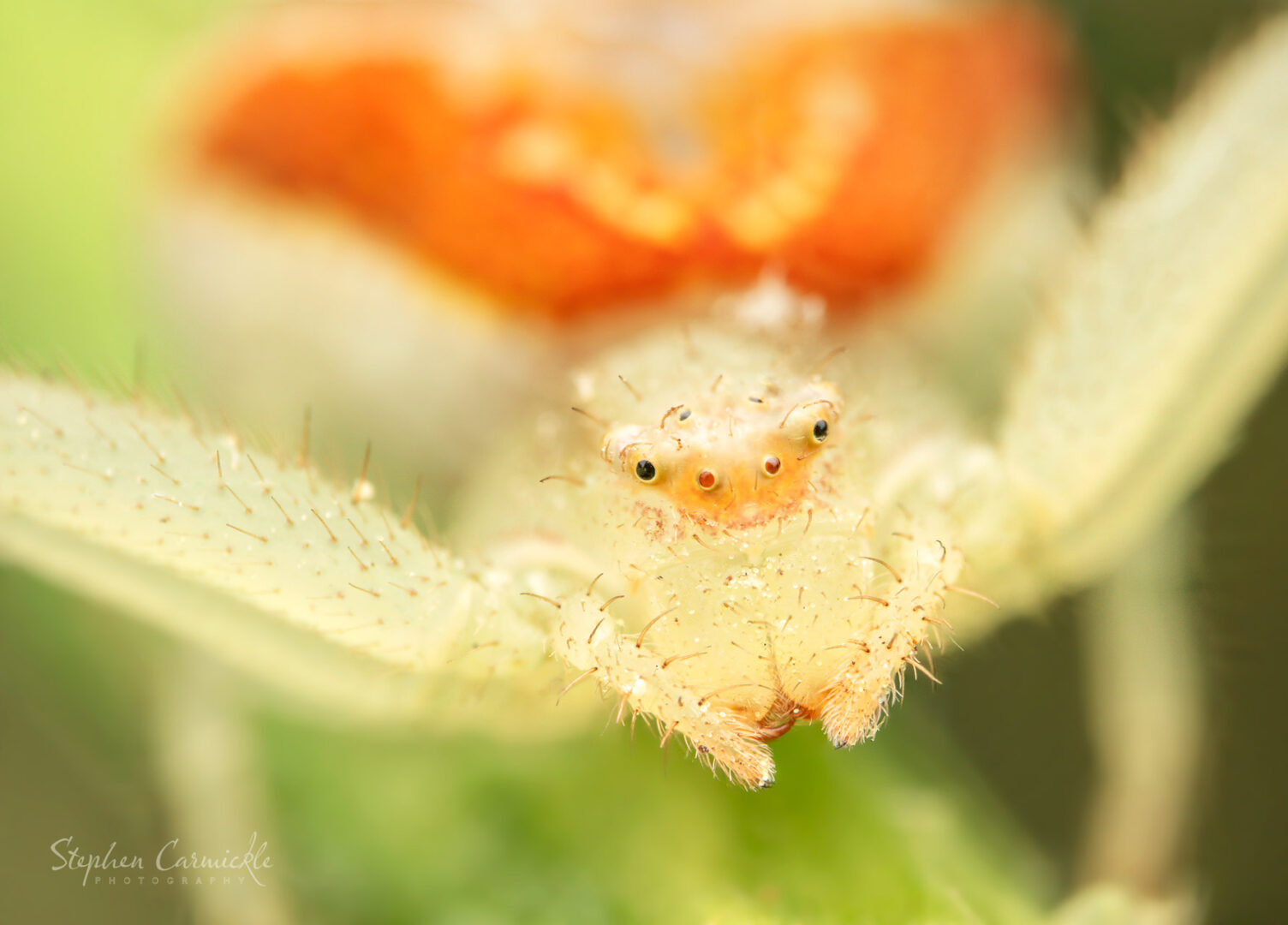
Willing? Maybe not the right word…The moment I shoved my camera in their face they shimmied around the stem which they were perched, quite gracefully I might add. This was a dance we would do for several minutes in the ever-rising heat of the approaching afternoon sun. I realized I was making this way more difficult on myself then it needed to be and didn’t want to just walk away from this opportunity. Which leads me to the first tip…
- Grab the Leaf – Or stick or stem or whatever your friendly neighborhood insect is resting upon. No matter what I did this little fella would find it’s way under something! Eventually I think even the spider began to grow tired of evading me and decided the best it could do to hide was take cover on the underside of a stem. So I grabbed the stem with a couple free fingers on my left hand and held it an angle much more favorable for my camera to access. Not only did I expose the elusive target to the barrel of my lens, but holding onto the plant made it much much easier to find my focus. Here’s how I did it: Rest the end of your lens in the palm of your hand near your wrist, then with two free fingers grab the foliage and maneuver it in a way that allows easier access to your subject. Now everything is connected: Lens to hand, hand to stem, stem to spider. By sliding the lens backward and forward along the surface of my palm and moving the stem to and fro with my fingers, I was able to make much more precise micro-adjustments and increased my stability greatly! The rate of successfully in focus shots rose dramatically (especially considering the amount of in focus shots to this point was 0). The main thing to worry about now was whether the subject was mobile or not, and in this case they decided perhaps they would take a break and give modeling a try!
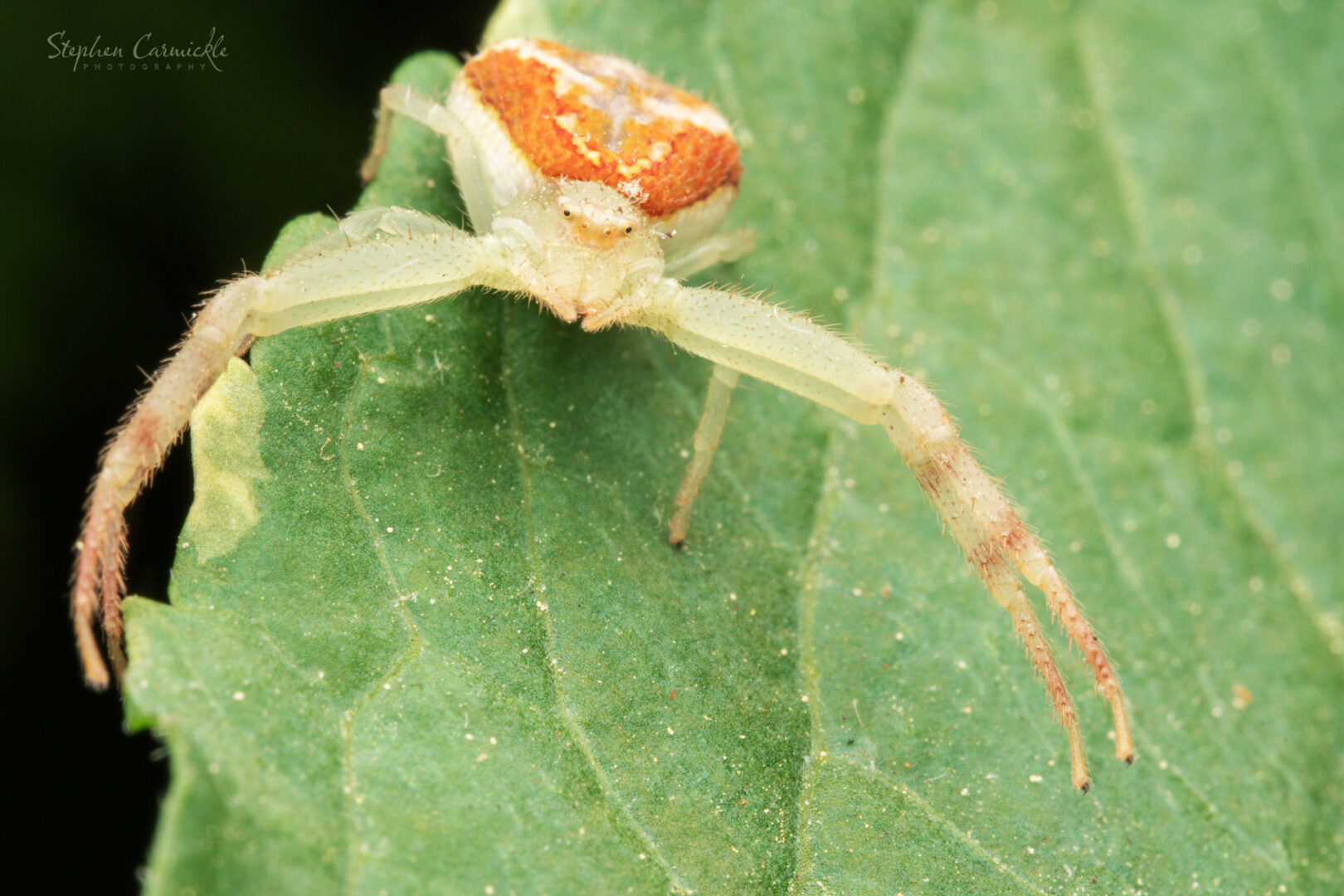
My next subject was another crab spider! This one was a different color and a bit more feisty than the first! I would apply the grab the leaf technique to this one as well, but in a slightly different manner.
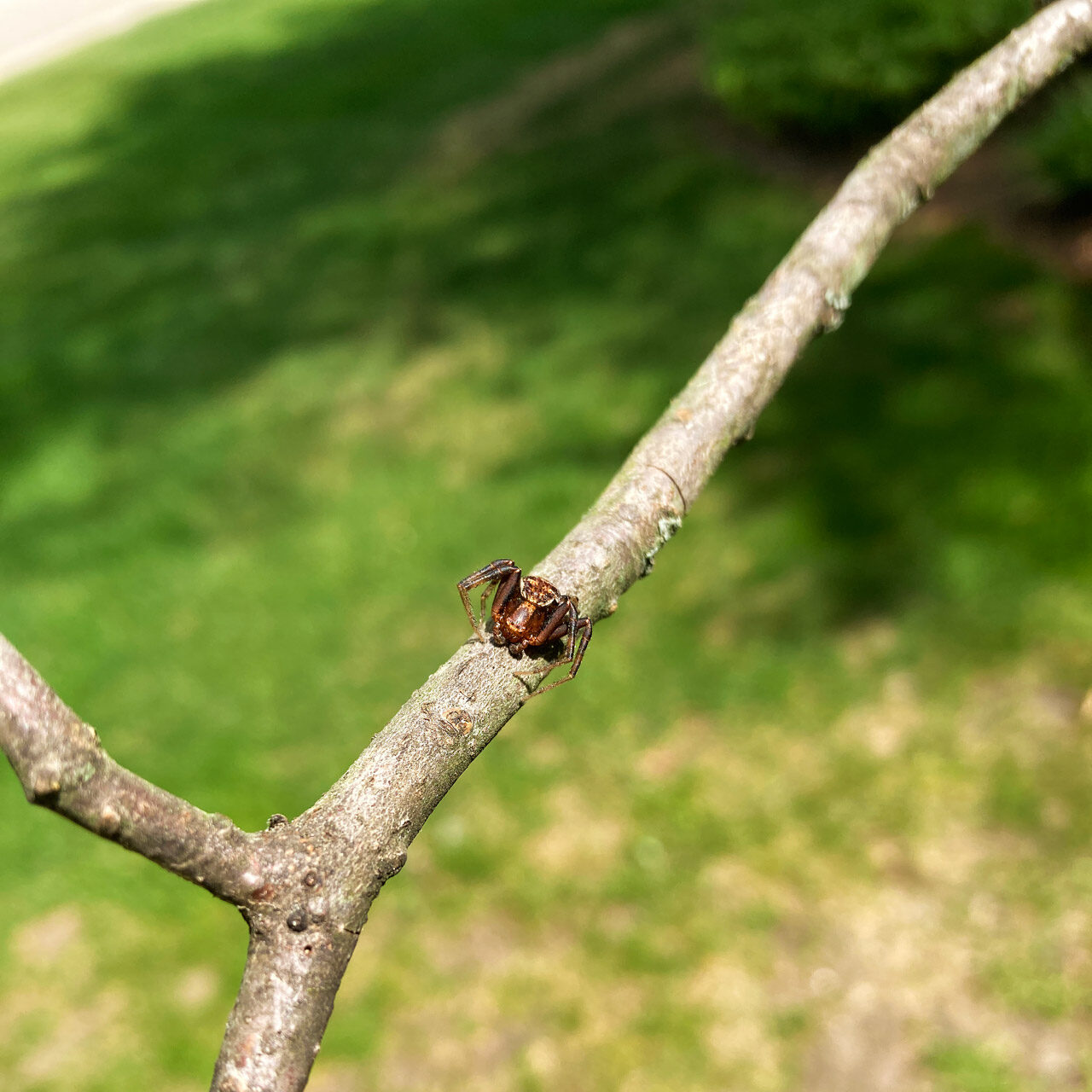
I saw this beautiful specimen crawling along the ground, so I grabbed a nearby stick and placed it in front of the spider hoping they would climb on, sure enough they did! With the spider on a stick I could take it anywhere! I used some red flowers to create a more interesting and colorful background:
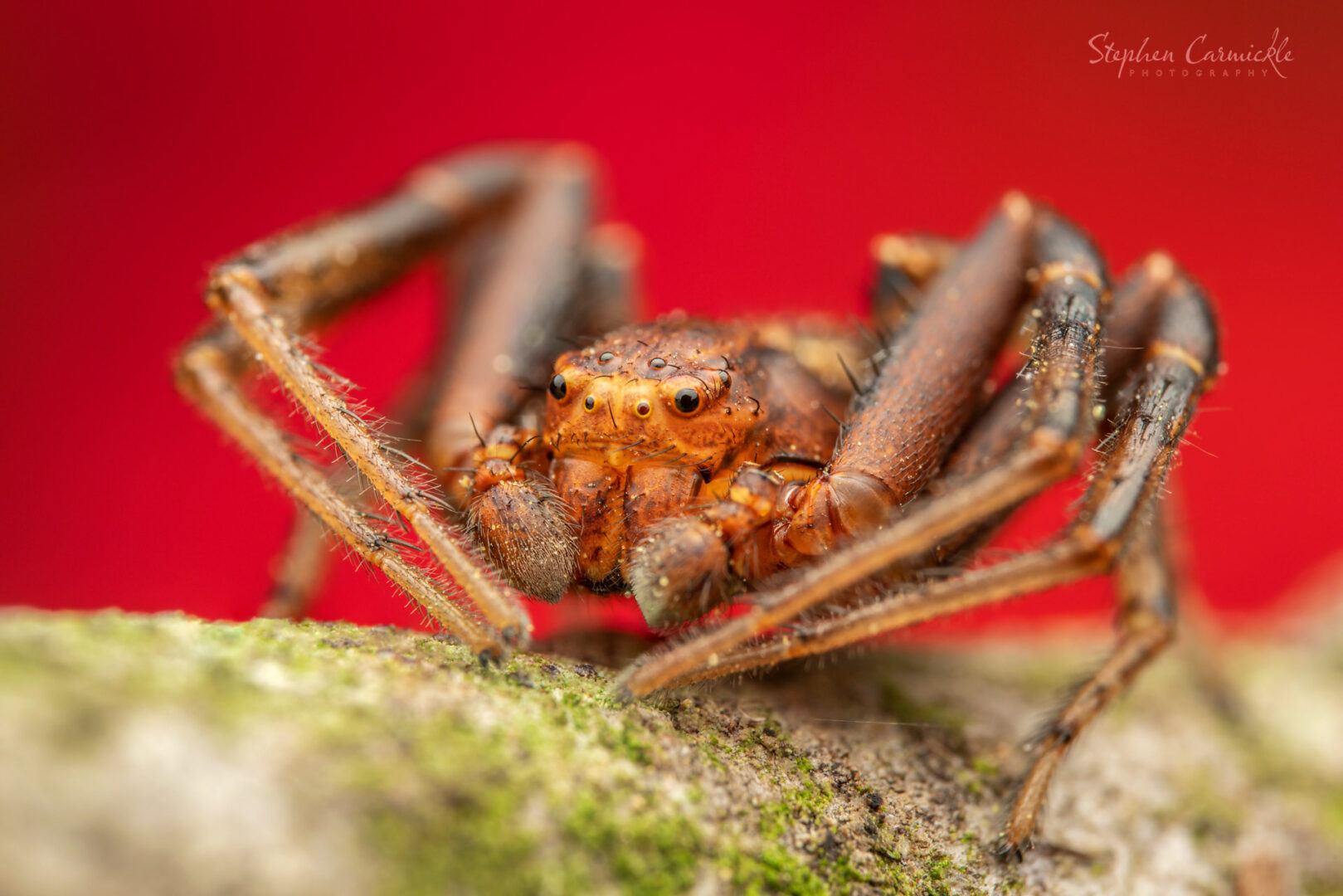
Since I was holding on to a loose stick, I had total control over the background. The background is a very important aspect to all types of photography but in macro photography I personally believe a nice colorful or interesting background can take a photo to the next level. How about we change up the background and throw a little green in the mix too?
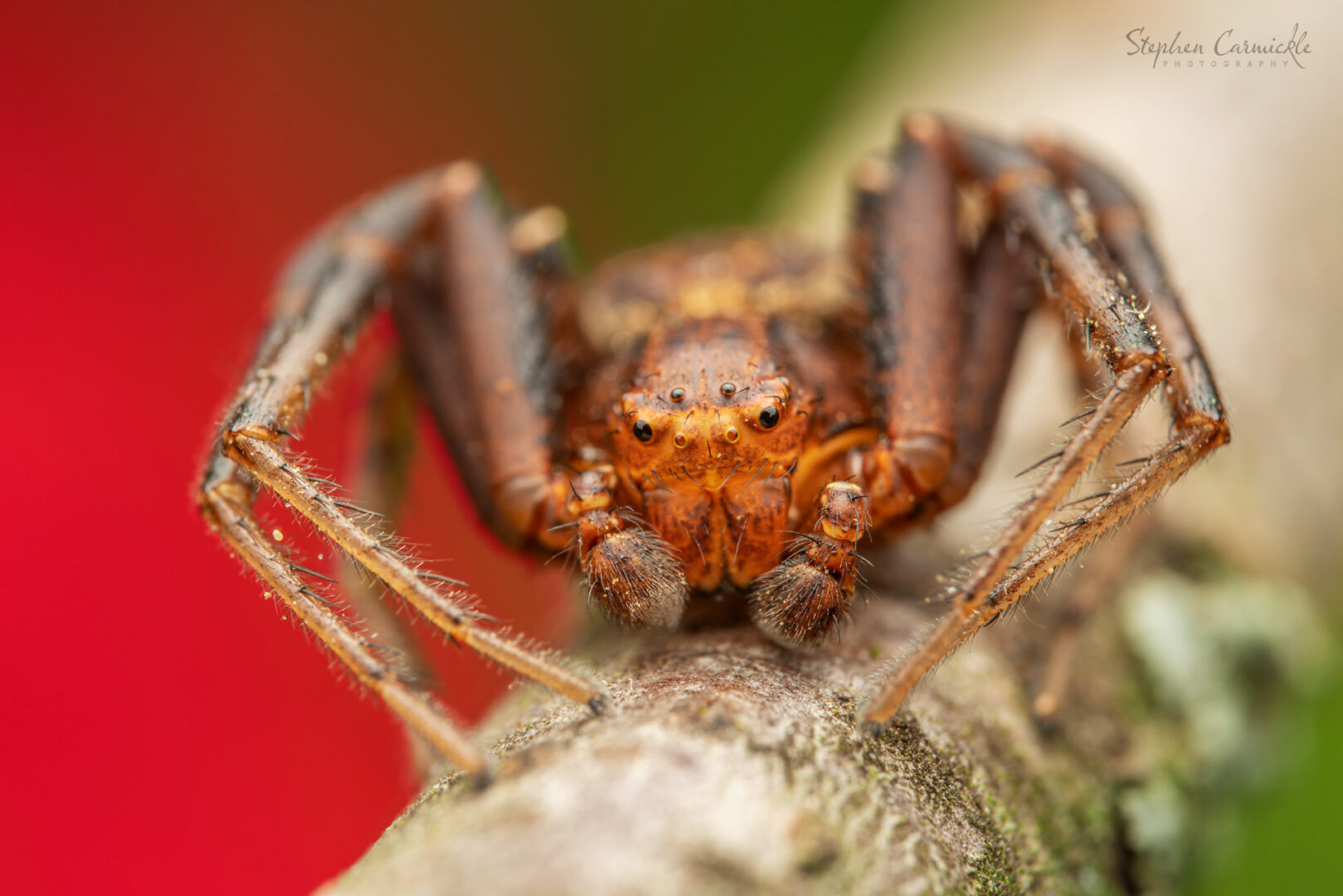
While this spider may have been more feisty, I was unable to capture them in a more interesting pose. They were constantly raising their front legs in the air, trying to intimidate me. Or shimmying around the stick in the signature crab pose with legs stretched to either side. But the only time they stood still enough for me to shoot was in a standard stance. In order to obtain focus I simply moved the stick back and forth beneath my lens, keeping the spider in frame. Several times I had to go inside to use the restroom or get a drink, I’d set the stick on the ground and when I came back out the spider was still there ready to continue our photoshoot.
If you’re just getting into macro photography, you might think using a tripod is a good idea to help with stabilization. Technically yes, but by the time you set up your tripod and get it in place, more than likely your subject will have flown or crawled away. Once your tripod is set up, stability then becomes your enemy since now you can no longer move your camera around to track your subject. Anyone who has been photographing insects knows that using a tripod is a terrible idea…….or is it? No, it’s still a terrible idea…BUT there is an unconventional way a small tripod or monopod can increase your stability while also retaining the necessary mobility required to photograph tricky insects. There are still drawbacks to what I am about to show you, like being much more difficult to photograph things at ground level. But in the right scenarios I believe it can be quite useful:
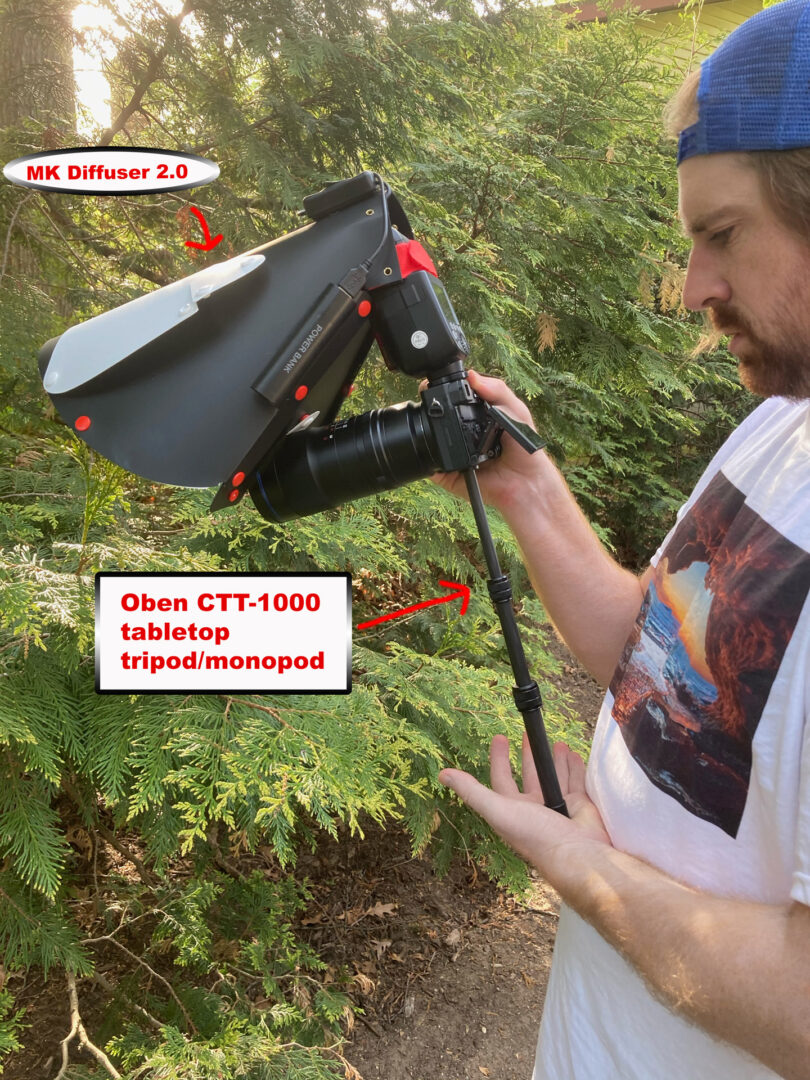
2. Become One With the Tripod.
By placing the monopod in my hand and digging my hand into my body, I drastically decreased the amount of sway, especially on the upward and downward axis. If you know you will be standing or kneeling, this is a great technique for increasing your accuracy with your shots. This could be a good way to photograph at longer working distances when you are too far away from your subject to use the Grab the Leaf technique.
But no matter what you do, the most important thing is practice and repetition. I’ve been photographing insects the majority of days for the last couple weeks and each time I go out I feel like it gets a little easier and a little more natural. I would really like to increase the depth of field of my photos at this range, so that is what I’ll be focusing on moving forward.
If you have any of your own tips, feel free to leave them in the comments below!
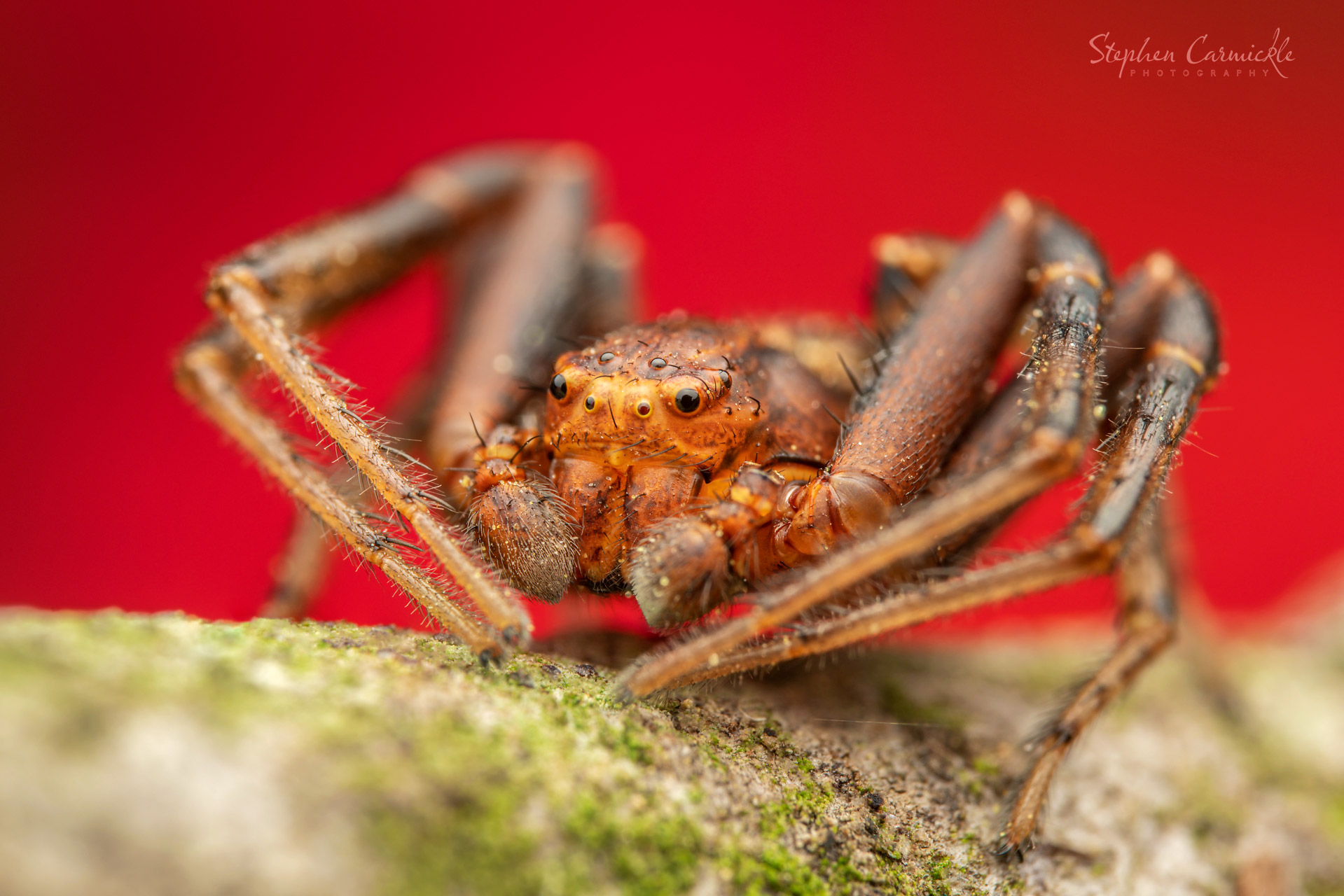

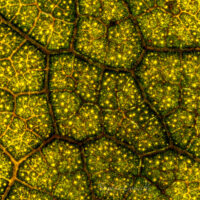
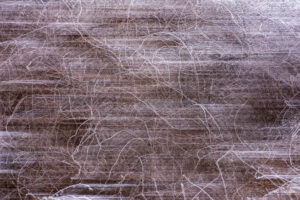
sueanne
24 May 2021I feel like i am reading and looking at pictures from National Geographic!! outstanding
Thank you for sharing your talent